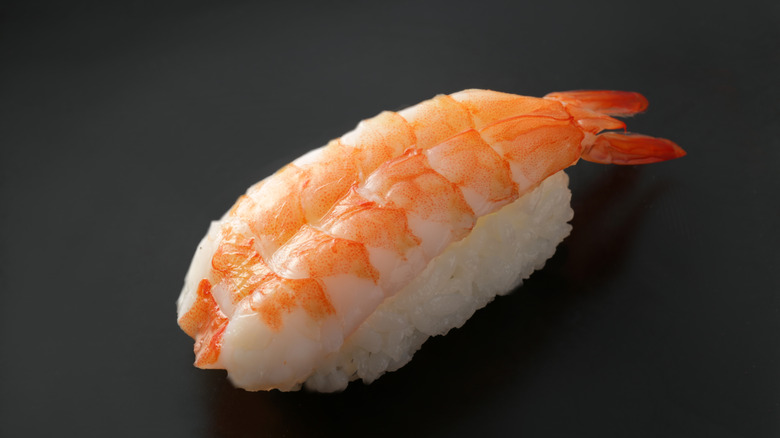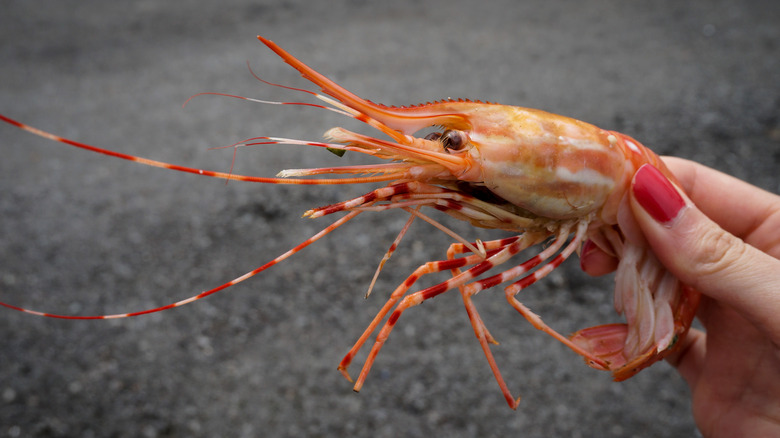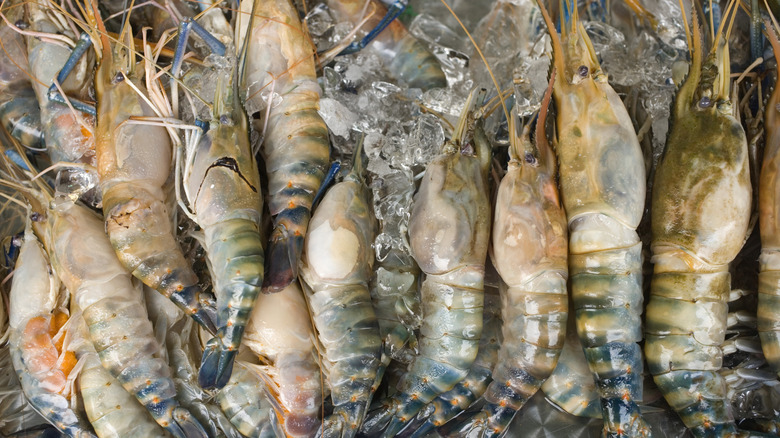The Only Variety Of Shrimp You Can Also Eat Raw
Shrimp is one of the most popular kinds of shellfish — let alone seafood — out there; it's plentiful, easy to cook with, and some varieties are more sustainable to catch and eat compared to most fish. But when it comes to eating shrimp raw, it's best to be careful. Federal guidelines indicate that most shellfish are unsafe to eat raw, and should instead be cooked to an opaque, "milky white" color. This is largely because seafood runs a higher risk of carrying dangerous diseases and parasites when undercooked.
If shrimp isn't the safest seafood to eat raw, why do people do it anyway? Firstly, it's delicious when prepared correctly. And secondly, not all shrimp are created equally. The sea is filled with a wide variety of shrimp all around the world, from tiger to pink. Yet, only one is technically good enough to eat raw. So, what species of this crave-able crustacean sits atop the rice on a piece of shrimp nigiri at your favorite sushi spot?
The type of shrimp to eat raw
Spot prawns are considered safe to eat raw, according to Fair Weather Salmon. Before you get worried that you've been eating the wrong sea critter in your sushi for years, you can rest easy. While their name might indicate otherwise, spot prawns aren't actually prawns, but shrimp. Believe it or not, according to the Integrated Taxonomic Information System (ITIS), they're even scientifically referred to as spot shrimp, not spot prawns.
This confusing colloquialism comes partially thanks to some cultural differences between North American English speakers and English speakers elsewhere. In fact, prawn largely replaces the word shrimp in commonwealth countries like the U.K. and Australia on menus and at grocery stores. Thanks to these regional differences, shrimp and prawn are often used interchangeably in the commercial fishing and culinary industries. Not only do they cook and taste similar, but they look nearly identical live. So what differentiates a shrimp from a prawn?
Prawns vs shrimp: Is there a difference?
While they may be near-indistinguishable at first glance, a few things separate one from the other, according to What's the Difference. For starters, shrimp and pawns bear some physical differences. Prawns have three sets of pincers, whereas shrimp only have two. Additionally, each shellfish has a slightly different body structure. Prawns (at least in the scientific sense) also only live in freshwater. What makes people call a spot shrimp a spot prawn is the fact that prawns also tend to be larger than shrimp, but much like flavor and texture, it depends on the species.
Before running out and buying some tasty-looking spot prawns at your nearest fishmonger, please make sure you trust the person selling you the fish and be sure to wash your shrimp thoroughly before eating. And when you do get raw shrimp, do so at your own risk; often it is not stored and treated properly. Additionally, if you're pregnant, undercooked or raw seafood could harm you and your baby.


